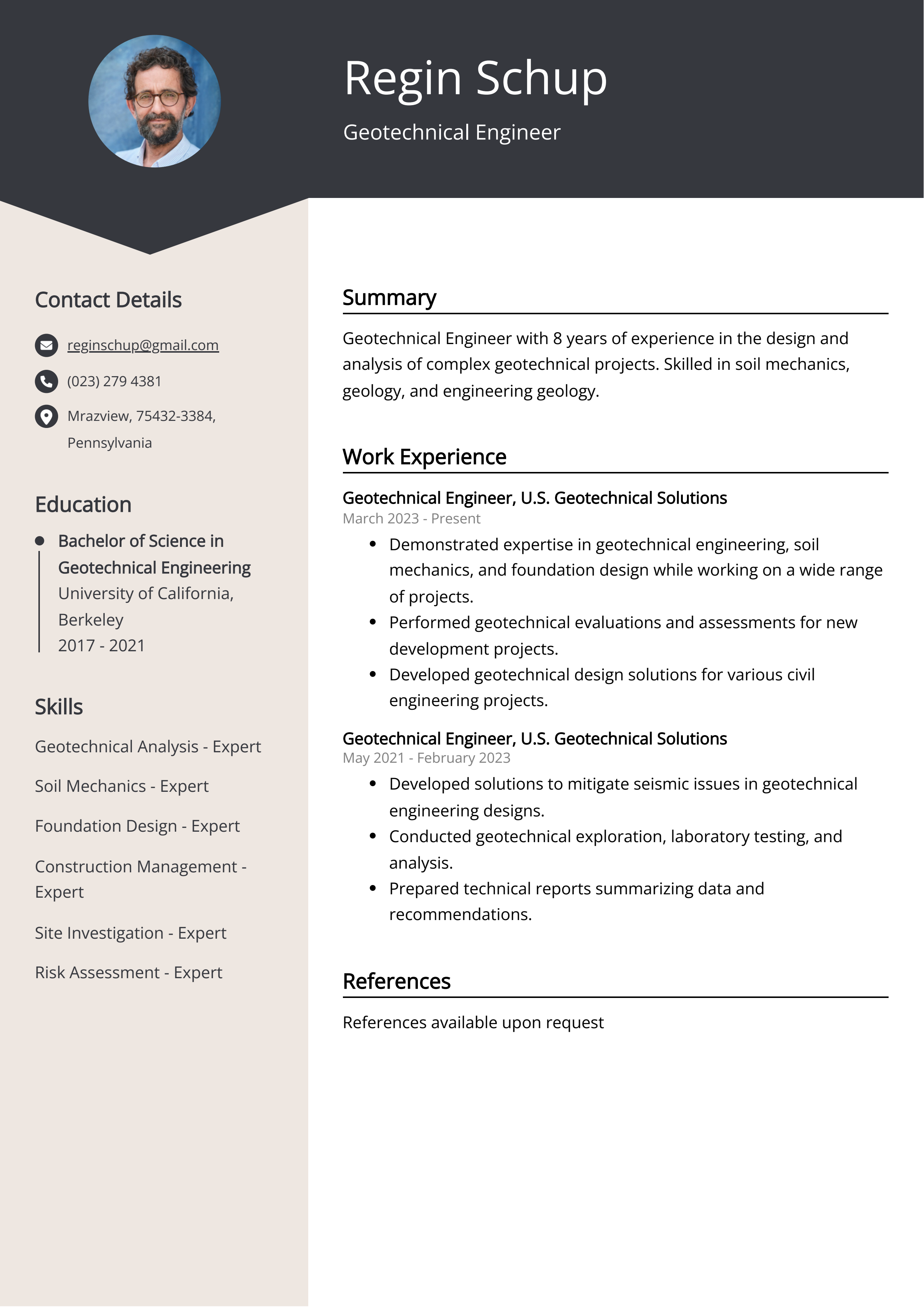Geotheta Can Be Fun For Everyone
Geotheta Can Be Fun For Everyone
Blog Article
10 Simple Techniques For Geotheta
Table of Contents7 Simple Techniques For GeothetaThe 10-Minute Rule for GeothetaGeotheta for DummiesSome Known Factual Statements About Geotheta Excitement About Geotheta

They carry out website investigations, collect examples, execute laboratory examinations, and evaluate data to examine the viability of the ground for construction projects - Geotechnical Engineers. Based upon their searchings for, geotechnical designers supply suggestions for foundation design, incline security, retaining frameworks, and reduction of geotechnical dangers. They work together with other professionals, such as architects, architectural engineers, and construction groups, to make sure that geotechnical factors to consider are integrated right into the total task style and execution
By assessing the behavior and properties of dirt and rock, they can identify prospective geotechnical dangers such as landslides, soil negotiation, or slope instability. Their expertise helps avoid failures or mishaps that can threaten lives and building. Below are some comprehensive tasks and responsibilities of a geotechnical designer: Website Investigation: Geotechnical designers conduct website examinations to gather data on subsurface conditions.
They interpret the data to comprehend the homes and actions of the dirt and rock, including their strength, leaks in the structure, compaction features, and groundwater conditions. Geotechnical Evaluation and Layout: Geotechnical designers analyze the data collected throughout site investigations to evaluate the security and viability of the site for building projects. They execute geotechnical computations and modeling to assess variables such as birthing capacity, settlement, slope stability, lateral planet pressures, and groundwater circulation.
Some Known Facts About Geotheta.
Structure Design: Geotechnical designers play a crucial role in developing foundations that can safely support the designated structure. They analyze the soil conditions and load demands to identify the proper foundation type, such as superficial foundations (e.g., grounds), deep structures (e.g (https://www.intensedebate.com/people/geotheta)., heaps), or specialized strategies like soil renovation. They think about aspects such as settlement restrictions, birthing capability, and soil-structure communication to create optimal structure styles
They assess construction plans, monitor website activities, and perform area examinations to verify that the style referrals are complied with. If unanticipated geotechnical issues arise, they assess the circumstance and give suggestions for removal or modifications to the layout. Threat Evaluation and Mitigation: Geotechnical engineers examine geotechnical threats and threats connected with the job site, such as landslides, liquefaction, or soil erosion.

Partnership and Communication: Geotechnical engineers function carefully with other professionals associated with a job, such as architects, architectural designers, and construction teams. Efficient interaction and partnership are necessary to incorporate geotechnical factors to consider into the general project layout and construction procedure. Geotechnical designers offer technical experience, response questions, and make certain that geotechnical requirements are met.
How Geotheta can Save You Time, Stress, and Money.
Below are some kinds of geotechnical designers: Foundation Engineer: Foundation engineers concentrate on designing and evaluating structures for frameworks. They analyze the soil conditions, tons requirements, and site qualities to determine the most ideal foundation type look what i found and style, such as superficial structures, deep foundations, or specialized methods like heap structures.
They review the elements influencing slope security, such as dirt residential properties, groundwater problems, and incline geometry, and establish techniques to stop incline failures and minimize threats. Quake Engineer: Quake engineers focus on assessing and developing structures to hold up against seismic forces. They examine the seismic danger of a website, review soil liquefaction capacity, and establish seismic style standards to ensure the security and strength of structures throughout earthquakes.
They carry out area screening, collect samples, and analyze the collected information to define the dirt buildings, geologic developments, and groundwater problems at a site. Geotechnical Instrumentation Engineer: Geotechnical instrumentation designers concentrate on surveillance and determining the behavior of dirt, rock, and frameworks. They mount and preserve instrumentation systems that monitor aspects such as dirt negotiation, groundwater levels, slope movements, and structural displacements to examine performance and offer very early cautions of prospective issues.
How Geotheta can Save You Time, Stress, and Money.
They carry out tests such as triaxial tests, combination tests, direct shear examinations, and leaks in the structure tests to collect data for geotechnical analysis and design. Geosynthetics Engineer: Geosynthetics designers concentrate on the style and application of geosynthetic materials, such as geotextiles, geogrids, and geomembranes. They utilize these materials to improve dirt stability, reinforce inclines, give water drainage remedies, and control disintegration.
They often tend to be investigative people, which means they're intellectual, reflective, and analytical. They are curious, methodical, reasonable, logical, and logical. Some of them are additionally social, implying they're kind, generous, cooperative, individual, caring, valuable, understanding, skillful, and pleasant - Geotechnical Engineers.
In the office environment, geotechnical designers make use of specialized software application devices to do computations, develop designs, and evaluate information. They prepare reports, review task specs, connect with clients and employee, and coordinate job activities. The office setup offers a helpful atmosphere for research study, analysis, and collaboration with other specialists entailed in the task.
8 Easy Facts About Geotheta Shown
They often go to job sites to conduct site investigations, assess geotechnical problems, and collect information for evaluation. These visits entail traveling to different locations, often in remote or difficult terrains. Geotechnical engineers may perform soil sampling, conduct examinations, and monitor building and construction activities to make sure that the geotechnical facets of the project are being implemented properly.
Geotechnical engineers additionally work in specialized geotechnical laboratories. Geotechnical lab engineers work extensively in these environments, taking care of screening equipment, operating instruments, and videotaping information.
Report this page